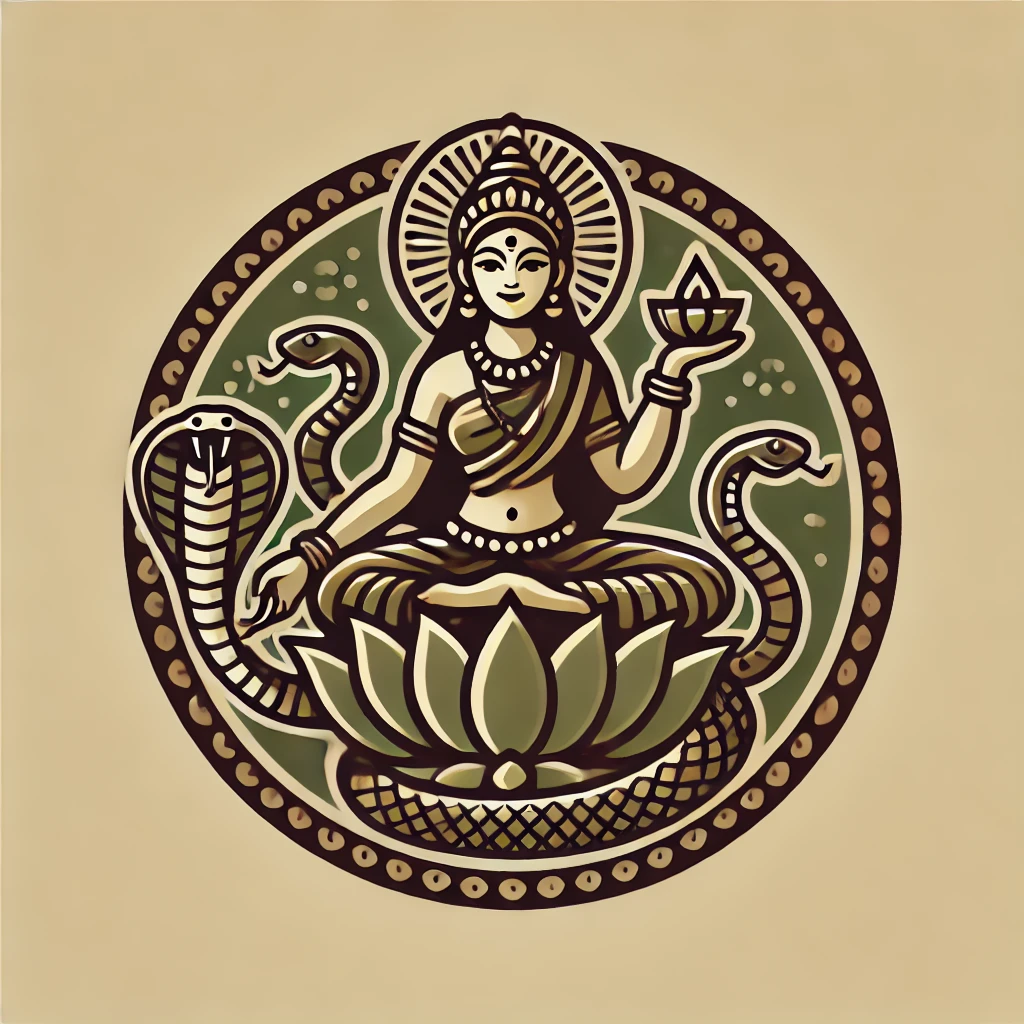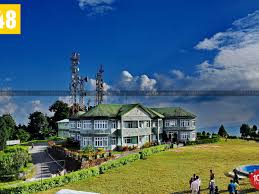Kalimpong is an east Indian hill town in the Himalayan foothills of West Bengal. Perched on a ridge above the Teesta River, it’s home to colonial-era buildings like MacFarlane Memorial Church, named after a Scottish missionary. South, the hilltop Durpin Monastery, or Zang Dhok Palri Phodang, contains sacred Buddhist scriptures. Deolo Park has landscaped gardens and offers views of the town and surrounding hills
Kalimpong, a charming hill station in the eastern Himalayas of West Bengal, India, is known for its rich history, colonial architecture, vibrant markets, monasteries, and breathtaking views of the surrounding mountains. Situated at an altitude of about 1,250 meters (4,100 feet), it has become a popular destination for tourists seeking a blend of natural beauty and cultural experiences.
1. Geographical Location
- Location: Kalimpong lies in the eastern Himalayan range, perched on a ridge overlooking the Teesta River. It offers panoramic views of the surrounding valleys and mountains, including the majestic Kangchenjunga.
- Coordinates: 27.06° N, 88.47° E
- Distance from Key Towns:
- Darjeeling: About 50 km
- Gangtok (capital of Sikkim): Approximately 75 km
- NJP (New Jalpaiguri): Around 65 km
- Bagdogra Airport: About 70 km
2. Historical and Colonial Heritage
- British Colonial Influence: Kalimpong was a key trading hub between India and Tibet during the British era. It was annexed by the British in the 19th century and became a major center for Christian missionary work and trade.
- Educational Institutions: The British legacy can be seen in the many schools established during colonial times. Kalimpong is home to some prestigious institutions, such as Dr. Graham’s Homes, a Scottish missionary school founded in 1900, which is still operational today.
- Lepcha Heritage: Kalimpong is historically part of the Lepcha Kingdom and has a significant population of Lepcha, Bhutia, and Nepali communities, making it culturally diverse. The influence of these communities is evident in the local traditions, language, and architecture.
3. Natural Beauty and Scenic Attractions
- Views of Kangchenjunga: On clear days, Kalimpong offers stunning views of the Kangchenjunga range, the third-highest mountain in the world. The town’s vantage points like Deolo Hill and Durpin Dara provide spectacular panoramas.
- Rivers and Valleys: The town is surrounded by lush green valleys, with the Teesta and Rangeet rivers flowing through the area, offering opportunities for adventure sports like rafting and hiking along the riverbanks.
- Flora and Fauna: Kalimpong is rich in flora, with dense forests, terraced farms, and gardens. It is known for its cultivation of exotic flowers like orchids, gladioli, and rhododendrons, earning it a reputation as a horticultural hub.
4. Tourist Attractions
- Deolo Hill: One of the highest points in Kalimpong, Deolo Hill offers panoramic views of the surrounding mountains, rivers, and the town below. It’s a popular spot for paragliding, trekking, and picnics.
- Durpin Monastery (Zang Dhok Palri Phodang Monastery): Perched atop Durpin Hill, this Tibetan Buddhist monastery is known for its beautiful murals and an impressive collection of Buddhist scriptures. The monastery also offers a stunning view of the Himalayan range.
- Cactus Nursery: Kalimpong is famous for its nurseries, particularly the Pine View Nursery, which houses a wide variety of cactus species. The nursery is a popular tourist spot, especially for nature lovers and horticultural enthusiasts.
- Dr. Graham’s Homes: This historic school, spread across a large campus, is an iconic institution in Kalimpong. Visitors can explore its beautiful colonial-style buildings and learn about its history as a missionary establishment for underprivileged children.
- Morgan House: A colonial mansion built in the early 20th century, Morgan House is a popular tourist attraction and now functions as a heritage hotel. It’s a fine example of British architecture and is rumored to be haunted, adding to its intrigue.
- Kalimpong Arts & Craft Centre: Established in 1897, this center promotes local craftsmanship and produces items like Tibetan carpets, handwoven textiles, and wood carvings. It’s an excellent place to learn about traditional handicrafts and purchase souvenirs.
- Mangal Dham Temple: A modern Hindu temple built in the memory of Guru Mangal Dasji. The temple is a major religious site for Hindus and is dedicated to Lord Krishna, attracting devotees and tourists alike.
- Thongsa Gompa (Bhutanese Monastery): One of the oldest Buddhist monasteries in Kalimpong, established in the 17th century by Bhutanese monks. It reflects the town’s deep connection with Tibetan and Bhutanese culture.
5. Adventure and Activities
- River Rafting on the Teesta: The Teesta River, flowing through the Kalimpong valley, is one of the most popular spots in India for white-water rafting. It offers thrilling rapids for adventure enthusiasts.
- Trekking and Hiking: Kalimpong is surrounded by trails that lead through lush forests, tea gardens, and mountain ridges. Popular trekking routes include trails to Deolo Hill, Relli River, and Lava.
- Paragliding: Deolo Hill is a favored spot for paragliding, offering an exhilarating experience of flying above the mountains and valleys with views of the Teesta River and the Himalayas.
6. Cultural and Religious Diversity
- Lepcha, Bhutia, and Nepali Communities: Kalimpong is a melting pot of cultures, with influences from the Lepcha, Bhutia, and Nepali communities. This diversity is reflected in local festivals, religious practices, and cuisines.
- Festivals: Important festivals celebrated in Kalimpong include Dasain, Tihar, Losar (Tibetan New Year), and Maghe Sankranti. Buddhist ceremonies and Hindu rituals are observed with great fervor, making Kalimpong culturally vibrant.
7. Horticulture and Floriculture
- Flower Nurseries: Kalimpong is famous for its flower nurseries, which produce a variety of ornamental plants, orchids, gladioli, and cacti. These nurseries contribute significantly to India’s floriculture industry, and many plants are exported globally.
- Kalimpong Flower Festival: Every spring, the town hosts a flower festival showcasing a wide range of indigenous and exotic flowers, including orchids, rhododendrons, and gladioli.
8. Best Time to Visit
- Spring (March to May): Spring is one of the best times to visit Kalimpong, with pleasant weather and blooming flowers adding to the town’s beauty. The temperature ranges from 10°C to 20°C.
- Autumn (September to November): Post-monsoon, the skies are clear, making it an ideal time to enjoy the majestic views of Kangchenjunga and engage in outdoor activities like trekking and paragliding.
- Winter (December to February): While winters are cold, Kalimpong offers a peaceful retreat for those who enjoy quiet and solitude. The temperature can drop to around 7°C.
- Monsoon (June to August): Kalimpong receives heavy rainfall during the monsoon season. Though the town becomes lush and green, landslides and roadblocks can make travel challenging.
9. How to Reach Kalimpong
- By Air: The nearest airport is Bagdogra Airport, located about 70 km from Kalimpong. From the airport, one can hire taxis or use shared jeeps to reach the town.
- By Train: The nearest major railway station is New Jalpaiguri (NJP), around 65 km away. NJP is well-connected to major cities in India. From NJP, taxis and shared jeeps are available to Kalimpong.
- By Road: Kalimpong is well-connected to nearby towns like Darjeeling, Gangtok, and Siliguri by road. Private taxis, shared jeeps, and buses frequently ply these routes.
10. Accommodation
- Hotels and Resorts: Kalimpong offers a range of accommodation options, from budget hotels to luxury resorts. Many hotels offer rooms with views of the surrounding hills and valleys.
- Homestays: Staying in a homestay is a great way to experience the local culture and hospitality. Homestays offer a personal touch, with many located in picturesque spots around the town.
11. Shopping
- Kalimpong Market: The bustling Kalimpong Bazaar is known for its wide range of handicrafts, woolen items, traditional Tibetan jewelry, and local food products like cheese and pickles. The market also sells exotic plants and flowers from local nurseries.
- Handicrafts and Souvenirs: Visitors can purchase Tibetan artifacts, handmade carpets, traditional Lepcha weaves, and wooden carvings as souvenirs from various craft centers around the town.
Summary
Kalimpong is a delightful hill station that offers a perfect blend of natural beauty, cultural heritage, and adventure activities. Whether you’re interested in exploring Buddhist monasteries, enjoying panoramic views of the Himalayas, or simply relaxing in a serene environment, Kalimpong provides a rich and fulfilling travel experience.

